This 24-year-old is assisting Uttarakhand’s BPL farmers with a fencing instrument to protects crops against animal attacks
By implementing modern solutions to help protect crops against wild animals, Adharsh seeks to introduce technologically-supported farming practices to the farmers of Champawat district. In doing so, his aim is to address the situation of farmers abandoning their primary occupation across 10 revenue villages.
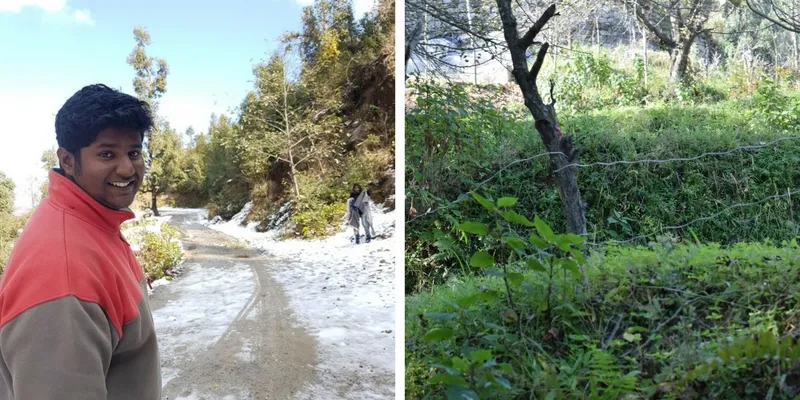
Agriculture is often sidelined, when it can actually be a profitable business if only supported well. A noble profession, it forms the pedestal our entire country depends on. However, farmers today are ravaged by a number of issues like climate change, wild animal intrusion, shift of traditional crop belts and lack of freshwater sources, only to name a few.
Unable to cope with situations like this, either due to a lack of support or understanding on how to tackle such hardships, farmers, over time, cop out of what is their only source of income and migrate to cities for survival. In an attempt to change the imbalance this can bring not only to health but also our economy, 24-year-old Adharsh Krishnan is working with technological interventions to protect and reinforce farming as an occupation by mitigating a few factors that affect it.
Adopting technology to avert challenges

The below-poverty-line (BPL) farmers of Champawat district, Uttarakhand are subject to many harsh realities. To start off, every year, wild animals such as deer and wild boars enter farms and consume or bulldoze the crops, making them unfit for personal consumption or marketability. What makes dealing with the situation all the more difficult is that most of these animals are protected by the law, making it illegal to kill them. To top it all, financial insecurity turn farmers helpless. With an average household of four-six members surviving on an annual income of a meagre Rs 8,000-15,000, farmers have no means to fight to these intruders.
Assessing the situation when he first arrived, Adharsh, a civil engineer from Chennai, presently working there as a SBI Youth for India fellow in association with BAIF Development Research Foundation, shares why he chose to look to technology as a solution to this problem.
The villagers, in tandem to their remote geographic position, aren’t exposed to the advances in technology and a lack of awareness on how to handle electrical equipment has hindered their prowess to work on technologically-supported farming practices. Since I felt I best fit in to help with technological advances that they were in dire need of, I took up this project.
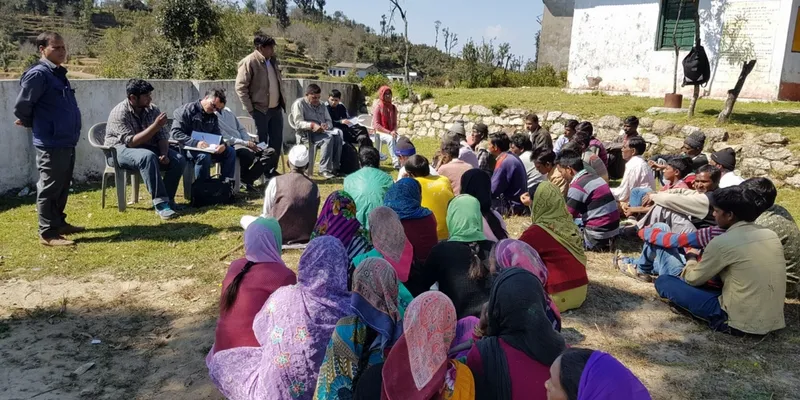
With the aim of equipping the farmers with a psychological and financial edge, in a way that their crops are safe from wild animals, Adharsh began working on a setting up a fencing instrument.
Setting up a fencing instrument to put an end to the menace
Working under the supervision of BAIF Project Officer, Dr.Dinesh Raturi and Leadbank Champawat district Manager Anand Singh Ravat, Adharsh began his journey with the farmers of Champawat in October 2016.
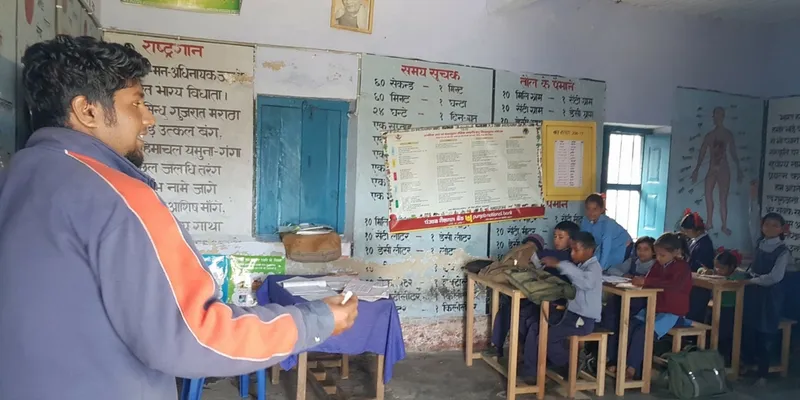
As a SBI YFI fellow, I introduced bamboo carriers, incandescent bulb heaters, and other such instruments, which were meted out with cold reception. To understand the need better, I took part in all meetings, surveys BAIF had conducted in the region. At one point or the other irrespective of the meeting agenda, the discussion on how to protect the farm from wild boars or deer came up at all meetings.
Understanding earlier practices, Adharsh learned that to keep wild animals at bay, farmers used traditional methods of deploying a scarecrow or used loose, long clothes tied to a pole, which moved with the wind to ward off animals. Some, also, illegally used domestic electric supply straight onto the metal wire fence they had constructed. This could lead to death by electrocution of not just the animals but of the villagers as well. But, despite these efforts, none of the measures proved to be effective as the animals began to adapt and evolve according to the scenario.
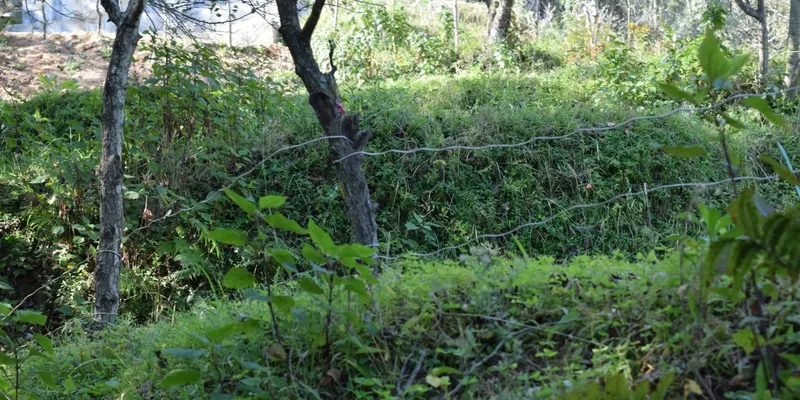
Desperate to find a solution, Ravat says, “The intrusion of wild animals has been a major problem which had led to the migration of farmers to cities in search of livelihoods. The crops grown earlier are no longer grown due to the fear of intrusion and neither do they fetch prices of the previously grown crops. Also, wild boars due to their size and agility can inflict serious harm if confronted with no precaution. We had to come up with a quick fix.”
Therefore, to solve this problem, Adharsh procured a fencing instrument from Gujarat with help from Ravat. The machine that was earlier tested in Champawat was not successful. But after a few minor adjustments and tweaks, the machine functioned successfully this time around.
“To run a field trial, only one set of joint family was selected. The machine was installed in Bhairav Dutt Oli’s farm in Olligaon, Goshni village to cover a plot of 0.25 acre of potato cultivation for the entire cropping period. There were three noticeable attacks and all the attacks on the farm plot were averted. Thus, it was successful at preventing the crops from being destroyed,” says Adharsh.
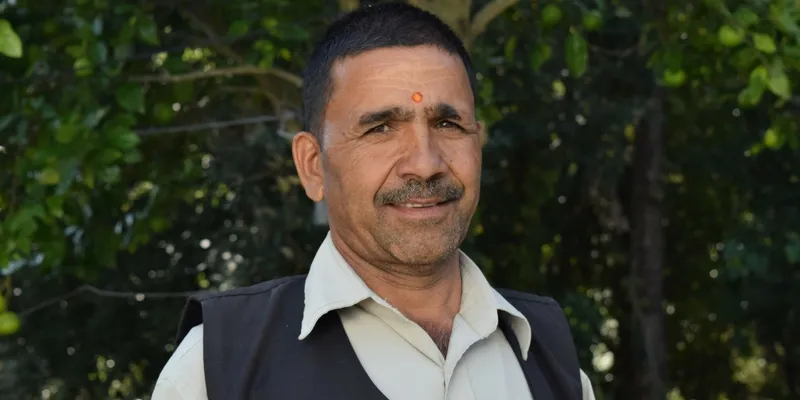
However, power cuts are quite frequent during the monsoon, and as such are a major setback, as the machine wouldn't work, rendering the crops vulnerable to attacks. To address the issue, Adharsh looked for various alternatives in the market. With solar-powered models out of the question, given how expensive they were, the decision was made to connect the machine to an inverter and keep it functioning during times of power failure. “After some more iteration, we decided to merge the circuits of the fencing machine and the inverter into a single unit, thus cutting the cost of casing and wiring.”
With the pilot test a success, till date all crops inside the fence are safe. Elated, Dutt says, “This machine has been a miracle. In years we hadn't been able to procure vegetables for consumption, but with the machine in place for the past six months there has been no attacks. We can now consume and also sell our crops. Animals afraid of electrocution are no more a hindrance.”
To create awareness and raise funds is the next step
Adharsh currently works in 10 revenue villages at Champawat, covering over 1,200 families of which nearly 850 families depend on agriculture as their primary source of income and 99 percent of them complain of wild animals destroying their cultivation.
“We started working on this issue this March and have been successful on arresting all breaches on the test farm. The farmer says the machine was switched off during the monsoons and still yam crops inside the fencing are safe while the corn planted outside has been decimated. This shows the cognition of the animals that once they have been hurt by factor/instrument, they avoid it from then on. He also mentioned how the potato from the season was bigger in yield since they didn’t have to harvest early to salvage the crops from the wild boars.”
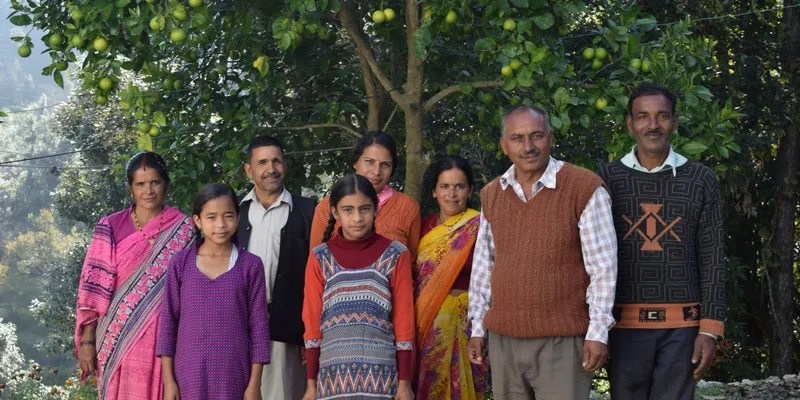
Presently, his plan is to scale the project across the 10 villages to check for more drawbacks and user feedback. To achieve this he has submitted a proposal for installation of 100-150 units to the district magistrate and the agricultural department, which have forwarded the proposal to the Central government to be funded under the Border Area Development Programme ( BADP) scheme.
However, the biggest challenge has been a lack of funds to scale and introduce machines across all villages.
The problem we face at the moment is that the BPL farmers in the BADP-covered regions are eligible for government-funded machines, but the BPL farmers in the other regions might genuinely find it difficult to purchase this instrument. The average price of the machine with wires and all accessories for fencing might incur a cost of Rs 5,000 for half-an-acre.
Out of the 10 villages, only four are covered under BADP, with the rest yet to be covered. A rough estimate of 350-400 machines will be required to cover these villages. The figures cost an average close to Rs 17.5 to 20 lakh. Therefore, BAIF and Adharsh are working toward creating awareness across the urban demographics and want to attract CSR funds to carry out this project.
Anyone interested in funding the project can contact Anand Singh Ravat: [email protected] and Adharsh Krishnan: [email protected].







